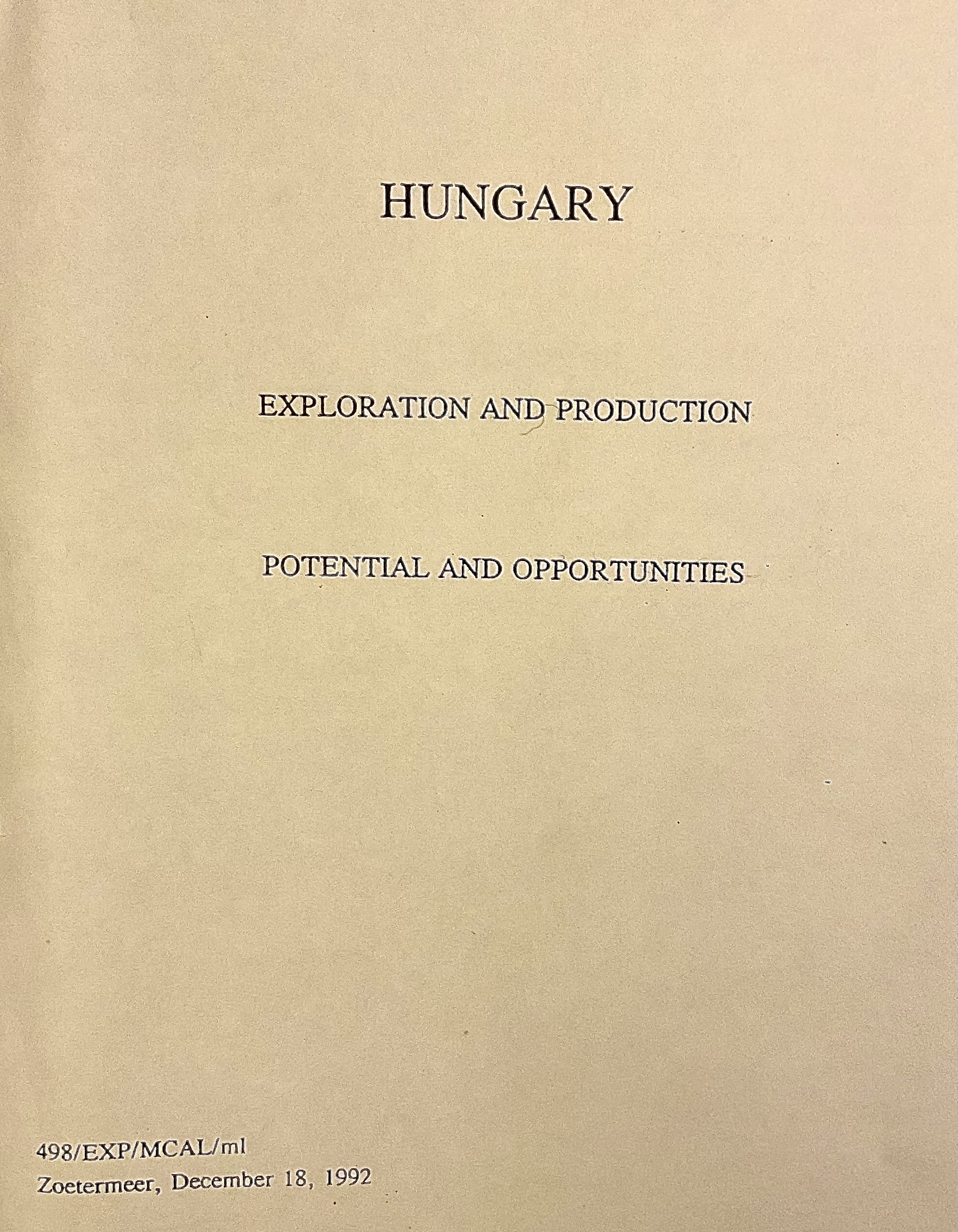Down Geo Memory Lane.
In 1992, I was entrusted with a unique mission: to study the exploration and production potential of Hungary for its first open bid round.
At that time, Hungary was not yet a member of the European Union, but it stood out as a land of opportunity, its future glimmering with promise.
The country, emerging from decades of state control, was opening its doors to international investment.
Our firm, sensing the winds of change, ventured boldly into Hungary and soon established an office in Budapest, eager to be part of this new chapter.
Budapest in 1992 was a city in transformation
It made me think of Paris, such as I had seen in The Great Gatsby.
The Donau Boulevard buzzed with life, lined by grand facades and bustling trams.
Iconic Buda, with its castle perched above the Danube, watched over the city’s revival.
Days were spent at the Hungarian Geological Survey, a hub of knowledge and tradition.
While evenings unfolded in legendary coffee houses like Gerbeaud and Café Central, where the aroma of strong coffee mingled with the energy of new ideas.
Restaurants, opulent with Hungarian musical ensembles such as Károly Gundel, became my absolute favourite and the regular meeting grounds for all us, investors, and dreamers. Dr. Janos Kókai was the the Ministry Representative we dealt with.
Back then, renewable energy was not yet in the picture. Our focus was firmly on fossil fuels—oil and gas exploration, seismic surveys, and mapping sedimentary basins.
Yet, the country’s famous thermal baths, such as the iconic ones of hotel Gellert in Buda, which was my number one place to stay, hinted at deeper, untapped potential below the surface.
Szeged’s Geothermal System: A Model of Transformation
- Largest in the EU: Szeged now operates the largest geothermal district heating system in the European Union, serving over 27,000 households and 400 public buildings.
- Retrofit Success: The system is a pioneering retrofit of existing gas infrastructure, demonstrating how cities can shift from fossil fuels to renewables with minimal disruption.
- Energy Security: By halving the city’s gas consumption, Szeged has dramatically reduced its reliance on imported Russian gas and increased local energy independence.
- Environmental Impact: The project cuts annual CO₂ emissions by 30,000–35,000 tonnes, making a significant contribution to Hungary’s carbon neutrality goals.
- Blueprint for Europe: Szeged’s approach is now seen as a model for other European cities seeking to decarbonize urban heating.
Challenges and Opportunities for Geothermal Expansion in Hungary
- Complex Regulation: The legal and permitting process for geothermal projects remains complicated, often slowing down new developments[5].
- Investment Hurdles: While interest is high, private investors are cautious, awaiting clearer policies and more streamlined procedures[5].
- Technological Needs: Most geothermal resources are low-temperature, requiring innovative solutions and efficient cascade systems for maximum utilization[3].
- EU Support: The European Union has played a crucial role, providing funding, policy guidance, and demonstration projects to accelerate geothermal adoption[5].
Geothermal Energy’s Role in Hungary’s Future
- Carbon Neutrality: Geothermal energy offers a constant, weather-independent renewable source, helping Hungary meet its EU climate targets and reduce its carbon footprint[5][6].
- Reducing Russian Gas Dependence: By expanding geothermal heating, Hungary is less exposed to external energy shocks and geopolitical risks[6].
- Exceptional Geology: Hungary’s Carpathian Basin provides outstanding subsurface conditions for geothermal development, with a wealth of data from thousands of wells drilled for hydrocarbons[3][6].
- Export Potential: As Hungary develops its geothermal expertise and infrastructure, it is well-positioned to export technology, knowledge, and even clean energy to neighboring countries[3][6].
Conclusion
My journey in Hungary began at a time when fossil fuels dominated the energy landscape and renewables were barely a whisper.
Today, Hungary stands at the forefront of geothermal innovation, with cities like Szeged leading the way.
The country’s unique geology, strong technical foundation, and growing EU support position it not just to meet its own energy needs sustainably, but to become a regional leader in clean energy.
The story of Hungary’s energy evolution is a testament to vision, resilience, and the power of looking beneath the surface.



Leave a Reply